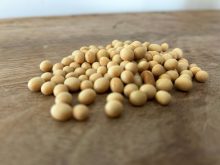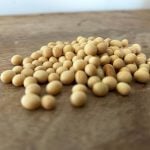Chicago | Reuters—Chicago Board of Trade grain and soybean futures fell on Wednesday as traders worried that U.S. farm exports will suffer from new tariffs that President Donald Trump is expected to implement.
Trump said after the markets closed that he would impose a 10 per cent baseline tariff on all imports to the United States and higher duties on dozens of the country’s biggest trading partners.
Worries about the new duties rattled grain traders as the U.S. exports more than 40 per cent of its soybean production. A disruption in agricultural export sales would hit farmers as they are struggling with weak crop prices.
Read Also

U.S. livestock: Cattle, hog futures rise on first WASDE since September
Chicago cattle and hog futures made modest gains on Friday after the USDA released its first World Agricultural Supply and…
China, the world’s biggest soybean importer, already imposed tariffs on U.S. farm products last month in response to earlier Trump levies. Now that new tariffs have been announced, traders will watch to see how other nations react, analysts said.
“The trade will likely spend the rest of the week trying to figure out what impact today’s tariff announcements will have on corn prices,” said Tomm Pfitzenmaier, analyst for Summit Commodity Brokerage in Iowa.
The most-active soybean contract finished 4-3/4 cents lower at $10.29-1/2 a bushel, a day after jumping to the highest level in nearly a month.
Corn futures Cv1 closed down 4 cents at $4.57-3/4 a bushel after rising on Tuesday to the highest level in more than a week.
CBOT wheat also weakened, with the most-active contract down 1-1/4 cents at $5.39-1/4 a bushel. Last week, wheat fell to its lowest level since July while corn touched a December low.
U.S. farmers are preparing to increase corn plantings by 5% in 2025 to the highest in 12 years, while cutting soybean and wheat acres, the U.S. Department of Agriculture said on Monday.
Illinois farmer Sherman Newlin said he may start planting soybeans late next week after rains.
“Everybody is hoping we can get stuff planted and get higher prices,” said Newlin, who is also an analyst for Risk Management Commodities.
—Ella Cao and Colleen Howe in Beijing; and Sybille de La Hamaide in Paris














